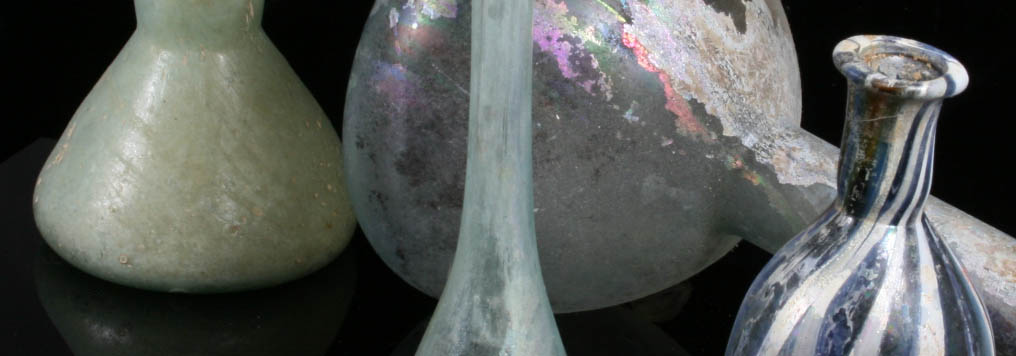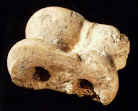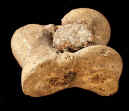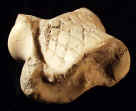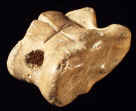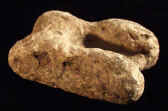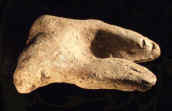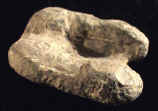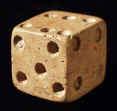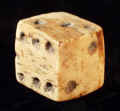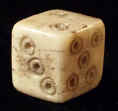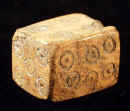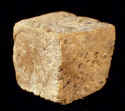Knucklebones (astragali), were an essential part of many ancient games: αστραγαλισμοσ was played using four astragali with different values on each side (see # 1081; 1082 with lead studs indicating the value of each side); πευτελιξοι was played with five astragali, simultaneously thrown into the air to be caught on the back of the hand. Natural knucklebone was usually cut down, grinded, drilled and filled with lead.
See: Herod. 1, 94; Plut. De fort.Alex., 11,6; Hampe R. Die Stele aus Pharsalos, 107. Berliner Winckelmann Programm, Berlin 1951, p. 18; Peters B. G. Processing of bone in Ancient States of Black Sea. Moscow, 1986, p. 78-84, tbl. XVI, XVII; Becq de Fouquieres L. Les jeux des ancients. Paris, 1869, p. 51-54; Schmidt E. Spielzeug und Spiele der Kinder im klassischen Altertum, Meiningen, 1971; Davidson G.R. Corinth, vol XII, The Minor Objects. Princeton, 1952, p.222; Hesperia, XVI, 1947, p.241, pl. LXI; Delos, XVIII, pp 332f; Robinson, Excavation at Olyntus, X, pp. 502-504.
1071
Bone astragalus
IV-I centuries B.C.
Pair of opposite sides grinded flat
H. 20 mm; L. 33 mm
$ 300
1081
II c. B.C. - IV c. A.D.
Bone astragalus
Each side filled with lead studs
indicating value
H. 17 mm; L. 32 mm
$ 300
1082
Bone astragalus
II c. B.C. - IV c. A.D.
Filled with lead studs
indicating value
H. 17 mm; L. 32 mm
$ 200
The lead astragali below are not gaming pieces but rather votive offerings.
Pausanias stated that ancient Greeks played dice since the Trojan War. Tessera had numbers on each side from 1 to 6. In Roman times and later, values placed on opposite sides add up to seven. Talus had only four numbered sides: 1, 3, 4, 6. The best throw was venus: all four tali fall to expose different numbers; the worse throw was canis when all exposed numbers are the same.
See: Paus., II, 20,3; X,31,1; Aeschin. Contra Timarch., 59; Robinson, Excavation at Olyntus, X, p. 504, note 78; Suet. Aug., 71 1-4; Amm. Marc., XXVII, 4, 28; Daremberg and Saglio, Dictionnaire, svv. Ludi, Latrunculi, Tessera; Pauly-Wissova, Realencyklopädie, s.v. Lusoria Tabula; Peters B. G. Processing of bone in Ancient States of Black Sea. Moscow, 1986, p. 88-90, tbl. XIX.

